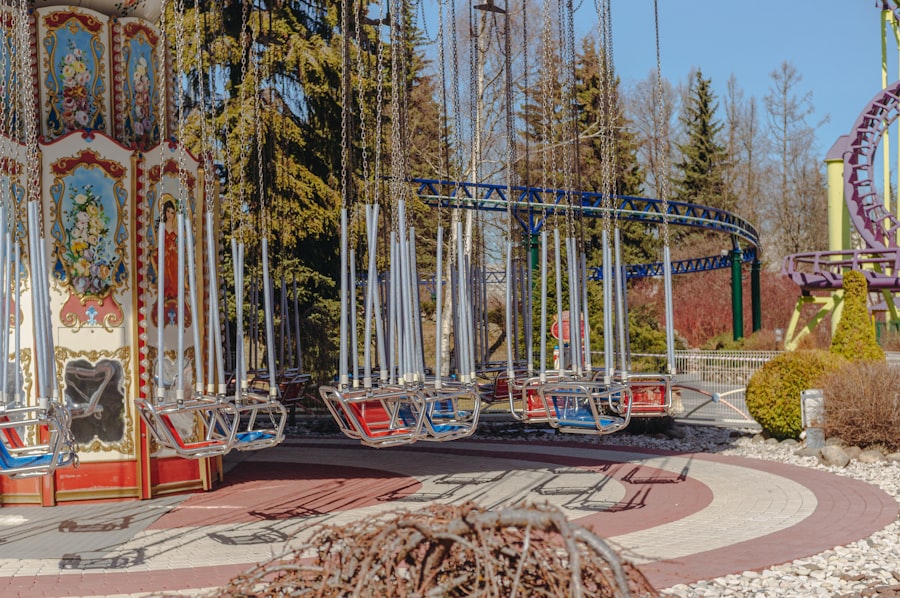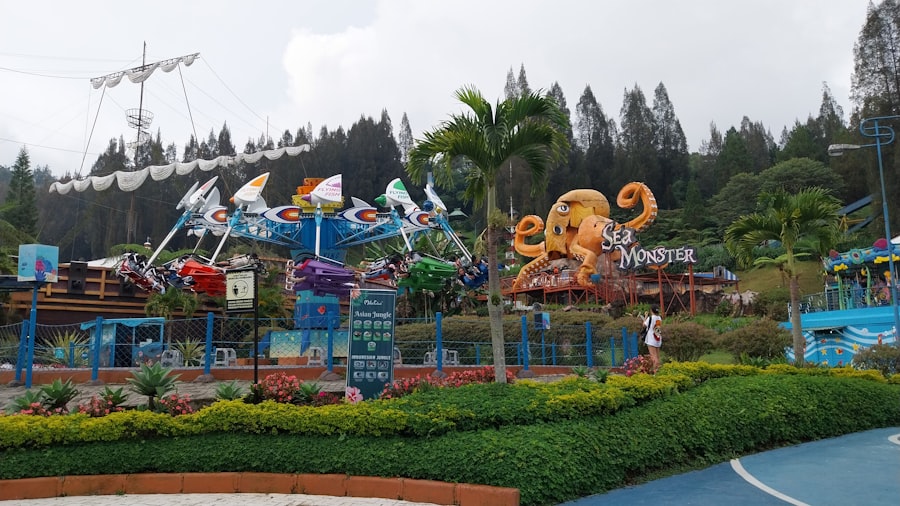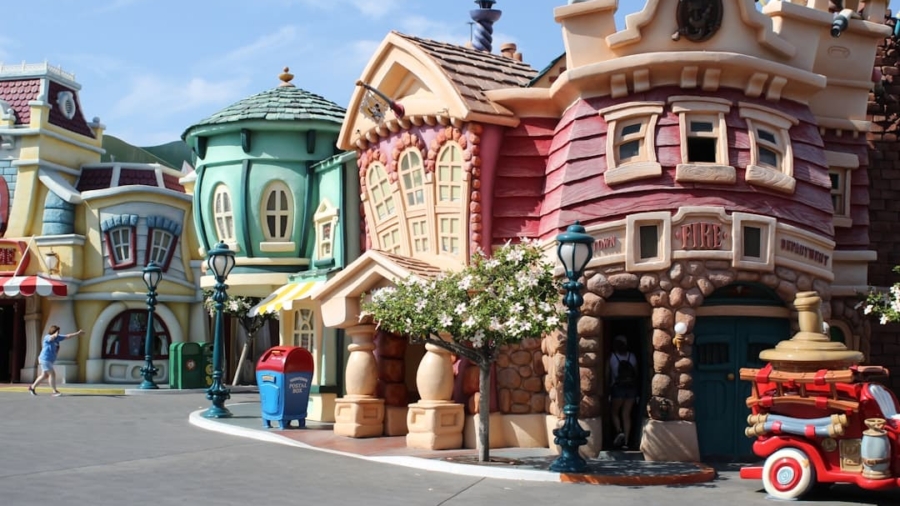Mixed reality (MR) technology has undergone a remarkable evolution since its inception, blending the physical and digital worlds in ways that were once the realm of science fiction. The term “mixed reality” itself was popularized by Paul Milgram and Fumio Kishino in the early 1990s, who introduced the concept as a continuum between the real and virtual environments. Initially, MR was primarily confined to academic research and niche applications, such as military training simulations and medical visualization.
However, advancements in computing power, graphics rendering, and sensor technology have propelled MR into the mainstream, making it accessible to a broader audience. The introduction of devices like Microsoft’s HoloLens and Magic Leap One marked significant milestones in the development of mixed reality. These headsets utilize advanced sensors and cameras to map the physical environment, allowing digital objects to interact seamlessly with the real world.
This capability has opened up new avenues for entertainment, education, and training. For instance, in educational settings, MR can create immersive learning experiences where students can visualize complex concepts in three dimensions. In entertainment, it has paved the way for interactive gaming experiences that engage users in unprecedented ways.
As technology continues to advance, the potential applications of mixed reality are expanding rapidly, setting the stage for its integration into various sectors.
Key Takeaways
- Mixed reality technology has evolved from virtual reality and augmented reality, combining the best of both worlds to create immersive experiences.
- Mixed reality theme parks are emerging in Asia, offering visitors a unique and interactive entertainment experience.
- These theme parks offer a wide range of experiences, from interactive games and simulations to immersive storytelling and educational attractions.
- Mixed reality theme parks are impacting the entertainment industry by setting new standards for immersive experiences and pushing the boundaries of technology.
- The integration of traditional and mixed reality attractions in theme parks creates a diverse and engaging experience for visitors.
The Emergence of Mixed Reality Theme Parks in Asia
In recent years, Asia has emerged as a hotbed for mixed reality theme parks, capitalizing on the region’s technological prowess and cultural affinity for immersive experiences. Countries like Japan, China, and South Korea have been at the forefront of this trend, investing heavily in the development of theme parks that incorporate mixed reality elements. For example, Universal Studios Beijing has integrated augmented reality (AR) attractions that enhance traditional rides with digital overlays, creating a more engaging experience for visitors.
Similarly, Tokyo’s Fuji-Q Highland has introduced MR experiences that blend roller coasters with virtual elements, allowing riders to interact with digital characters during their descent. The rise of mixed reality theme parks in Asia can be attributed to several factors. Firstly, the region boasts a tech-savvy population that is eager to embrace new technologies.
Secondly, there is a strong cultural emphasis on entertainment and leisure activities, making theme parks a popular destination for families and tourists alike. Additionally, the competitive landscape among theme parks has driven innovation, with operators seeking to differentiate themselves through unique offerings. As a result, mixed reality attractions are not just an enhancement but a core component of the overall theme park experience.
The Unique Experiences Offered by Mixed Reality Theme Parks

Mixed reality theme parks offer a plethora of unique experiences that transcend traditional amusement park attractions. One of the most compelling aspects of MR is its ability to create interactive environments where guests can engage with digital content in real-time. For instance, at attractions like “The Walking Dead: Dead Inside” at Universal Studios Hollywood, visitors don MR headsets that allow them to navigate through a zombie-infested environment while interacting with both live actors and digital projections.
This fusion of physical and virtual elements creates an adrenaline-pumping experience that is both thrilling and immersive. Moreover, mixed reality parks often incorporate storytelling elements that enhance the overall experience. For example, at the VR Zone Shinjuku in Tokyo, guests can participate in narrative-driven games where their choices influence the outcome of the story.
This level of interactivity fosters a deeper emotional connection to the experience, as visitors feel like active participants rather than passive observers. Additionally, many MR attractions are designed to be social experiences, encouraging groups to collaborate or compete against each other in various challenges. This social aspect not only enhances enjoyment but also creates memorable moments that guests are likely to share on social media platforms.
The Impact of Mixed Reality Theme Parks on the Entertainment Industry
The emergence of mixed reality theme parks is reshaping the entertainment industry by setting new standards for visitor engagement and experience design.
This shift is prompting established theme park operators to rethink their strategies and invest in new technologies to remain competitive.
As a result, we are witnessing a wave of innovation across the industry as parks strive to incorporate mixed reality elements into their offerings. Furthermore, mixed reality theme parks are influencing content creation within the entertainment sector. The demand for immersive experiences has led to collaborations between theme parks and film studios, resulting in attractions based on popular franchises such as Marvel and Star Wars.
These partnerships not only enhance the park’s appeal but also create cross-promotional opportunities that benefit both parties. For instance, Disney’s Star Wars: Galaxy’s Edge combines cutting-edge technology with beloved characters and narratives from the franchise, creating an unparalleled experience that draws fans from around the globe. This trend indicates that mixed reality is not just a passing fad but a transformative force that is redefining how stories are told and experienced.
The Integration of Traditional and Mixed Reality Attractions
The successful integration of traditional attractions with mixed reality elements is crucial for creating a cohesive theme park experience. Many parks are finding innovative ways to blend classic rides with cutting-edge technology to enhance guest enjoyment without losing the charm of traditional attractions. For example, roller coasters can now feature augmented reality overlays that provide riders with visual narratives or thematic enhancements during their ride experience.
This approach allows parks to maintain their iconic rides while simultaneously modernizing them to appeal to tech-savvy audiences. Moreover, integrating MR into existing attractions can also serve as a cost-effective strategy for theme parks looking to refresh their offerings without completely overhauling their infrastructure. By adding digital enhancements to established rides or shows, parks can create new experiences that feel fresh and exciting while leveraging existing assets.
This strategy not only maximizes return on investment but also allows for a smoother transition into the world of mixed reality for both operators and guests alike.
The Challenges and Opportunities for Mixed Reality Theme Parks in Asia

While the potential for mixed reality theme parks in Asia is immense, several challenges must be addressed to ensure their success. One significant hurdle is the high cost associated with developing and maintaining MR attractions. The technology required for immersive experiences can be expensive to implement and may require ongoing updates to keep pace with advancements in hardware and software.
Additionally, there is a need for skilled personnel who can design and operate these complex systems, which may pose recruitment challenges in certain regions. Despite these challenges, there are numerous opportunities for growth within this sector. As technology continues to evolve, costs are likely to decrease over time, making it more feasible for parks to invest in MR attractions.
Furthermore, as consumer demand for unique experiences rises, theme parks that successfully integrate mixed reality will likely attract larger audiences seeking novel entertainment options. The potential for collaboration with tech companies also presents an opportunity for innovation; partnerships can lead to groundbreaking attractions that push the boundaries of what is possible in mixed reality.
The Future of Mixed Reality Theme Parks in Asia
Looking ahead, the future of mixed reality theme parks in Asia appears promising as technological advancements continue to reshape the landscape of entertainment. With ongoing developments in artificial intelligence (AI), machine learning, and spatial computing, we can expect even more sophisticated MR experiences that adapt to individual preferences and behaviors. For instance, future attractions may utilize AI algorithms to personalize experiences based on guest interactions or preferences gathered from previous visits.
Moreover, as sustainability becomes an increasingly important consideration for consumers and businesses alike, mixed reality technology could play a role in creating more environmentally friendly attractions. By reducing reliance on physical materials through virtual experiences or optimizing energy consumption through smart technologies, theme parks can align themselves with global sustainability goals while still providing thrilling entertainment options.
The Influence of Mixed Reality Theme Parks on Tourism in Asia
Mixed reality theme parks are poised to have a significant impact on tourism in Asia by attracting both domestic and international visitors seeking unique experiences. As these parks become more prevalent, they will likely serve as major tourist destinations that draw travelers from around the world eager to explore cutting-edge attractions. This influx of visitors can stimulate local economies by creating jobs in hospitality, retail, and entertainment sectors while also promoting cultural exchange through shared experiences.
Additionally, mixed reality theme parks can enhance regional tourism by complementing existing attractions and encouraging longer stays. For example, visitors may choose to explore nearby cultural sites or natural wonders after experiencing an MR park, thereby enriching their overall travel experience.
The rise of mixed reality theme parks in Asia is revolutionizing the entertainment industry by blending the physical and digital worlds to create immersive experiences. These parks are leveraging cutting-edge technology to offer visitors a unique and interactive adventure that goes beyond traditional amusement parks. A related article that delves into the technological advancements influencing various industries, including entertainment, is The Best Laptop for Architects. This article explores the importance of powerful computing devices in designing and executing complex projects, which is also a crucial aspect of developing the sophisticated environments found in mixed reality theme parks.
FAQs
What is mixed reality?
Mixed reality (MR) is a technology that combines elements of both virtual reality (VR) and augmented reality (AR) to create an interactive and immersive experience. It allows users to interact with both digital and physical elements in real time.
What are mixed reality theme parks?
Mixed reality theme parks are entertainment venues that utilize mixed reality technology to create immersive and interactive experiences for visitors. These parks often feature a combination of physical attractions and digital elements to provide a unique and engaging entertainment experience.
Why are mixed reality theme parks becoming popular in Asia?
Mixed reality theme parks are becoming popular in Asia due to the region’s growing interest in cutting-edge technology and immersive entertainment experiences. Additionally, the rise of mixed reality theme parks in Asia can be attributed to the increasing demand for unique and innovative leisure activities among Asian consumers.
What types of experiences can visitors expect at mixed reality theme parks?
Visitors to mixed reality theme parks can expect a wide range of experiences, including interactive rides, immersive storytelling experiences, virtual games, and interactive exhibits that blend physical and digital elements. These experiences are designed to provide visitors with a sense of wonder and excitement.
Which countries in Asia are leading the way in the development of mixed reality theme parks?
Countries such as Japan, China, and South Korea are leading the way in the development of mixed reality theme parks in Asia. These countries have a strong focus on technological innovation and are home to some of the world’s most advanced mixed reality experiences.
How are mixed reality theme parks different from traditional theme parks?
Mixed reality theme parks differ from traditional theme parks in that they incorporate advanced technology, such as mixed reality, to create immersive and interactive experiences for visitors. While traditional theme parks focus on physical rides and attractions, mixed reality theme parks blend physical and digital elements to provide a more dynamic and engaging entertainment experience.

